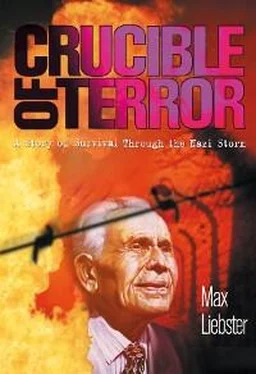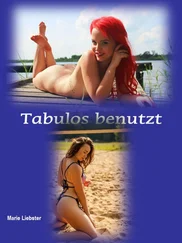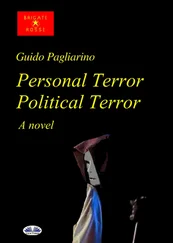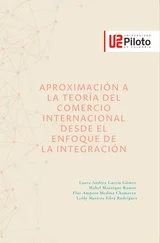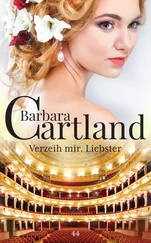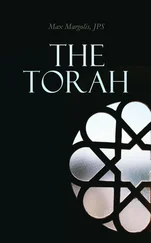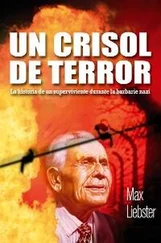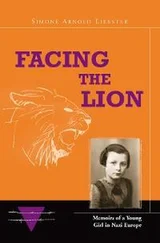Max Liebster - Crucible of Terror
Здесь есть возможность читать онлайн «Max Liebster - Crucible of Terror» — ознакомительный отрывок электронной книги совершенно бесплатно, а после прочтения отрывка купить полную версию. В некоторых случаях можно слушать аудио, скачать через торрент в формате fb2 и присутствует краткое содержание. Жанр: unrecognised, на английском языке. Описание произведения, (предисловие) а так же отзывы посетителей доступны на портале библиотеки ЛибКат.
- Название:Crucible of Terror
- Автор:
- Жанр:
- Год:неизвестен
- ISBN:нет данных
- Рейтинг книги:5 / 5. Голосов: 1
-
Избранное:Добавить в избранное
- Отзывы:
-
Ваша оценка:
- 100
- 1
- 2
- 3
- 4
- 5
Crucible of Terror: краткое содержание, описание и аннотация
Предлагаем к чтению аннотацию, описание, краткое содержание или предисловие (зависит от того, что написал сам автор книги «Crucible of Terror»). Если вы не нашли необходимую информацию о книге — напишите в комментариях, мы постараемся отыскать её.
Crucible of Terror — читать онлайн ознакомительный отрывок
Ниже представлен текст книги, разбитый по страницам. Система сохранения места последней прочитанной страницы, позволяет с удобством читать онлайн бесплатно книгу «Crucible of Terror», без необходимости каждый раз заново искать на чём Вы остановились. Поставьте закладку, и сможете в любой момент перейти на страницу, на которой закончили чтение.
Интервал:
Закладка:
Sometimes when Aunt Settchen was not lying under a heavy down-filled comforter, she would sit in her armchair wrapped in layers of blankets. Only her dark, cavernous eyes showed. Or she would stretch out her long, bony fingers, asking for a cup of herb tea to help her digestion. She anxiously awaited her small pension. On the 10th of each month, she would say, “In five days it will be the 15th; half of the month is gone. Then, only two more weeks until my payment comes!” She would sit and look out the window next to her chair. Her dark eyes would suddenly light up when she spotted Julius and Hugo, her cousins, coming up the street. They never failed to stop by when they did business in the nearby villages and farms. They always had kind words, smiles, and a little cash for Aunt Settchen.

Ida hated school, but she wasn’t afraid of hard work. In 1924, at age 16, Ida finished school and looked for a job as a housekeeper. She wanted her independence as soon as possible. I was nearly ten years old by then and glad to be out from under her diligent mothering. We never played together anymore. I had my own friends. Together with the boys, I slid on my feet along snowy Binn Street or down the frozen Lauter River, ran about green meadows, shuffled through drifts of crisp leaves, watched the neighbors’ goats, and played with a boomerang. A brief moment of inattention and I was marked for life when the boomerang swung around and hit me square on the chin.
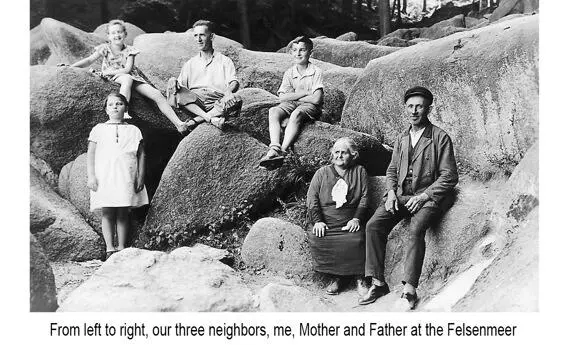
The Felsenmeer—the sea of stones—was my favorite playground. Sometimes my family would take our Sabbath walk here. It was right at our doorstep and within the limit of a Sabbath day’s journey.
Cascades of sleek boulders seemed to tumble down from the Feldberg summit, which culminated at 514 meters and ended in the meadow. Legend has it that a giant living in the Hohenstein Mountain had a serious quarrel with the Feldberg giant. The Hohenstein giant hurled the mammoth stones across the valley. The Feldberg giant was buried by the stones and imprisoned in a terrifying abyss. Climbers who stepped too heavily on those rocks might hear him roar!
As my friends and I ran down the path alongside the Felsenmeer, our boyish laughter echoed loud and clear throughout the majestic forest. If we stood quietly, we thought we could hear grumbling noises from under the rocks. Sometimes we glimpsed the giant’s eye, twinkling blue or dark gray, depending on the color of the sky. The eye peered out from the bottom of the stony river, which gave us crystal-clear water to quench our thirst. We cooled our red faces and splashed one another. The spring is still called Friedrichsbrunen, named after a German legend of ancient times.
The haunting legacy of the gray granite boulders had spooked people since time immemorial. During heathen times, on nights of the full moon, cloaked figures at secret meetings pronounced terrifying spells and sacred vows, summoning spirits to rise up from the abyss. But for my friends and me, the forest with its bewitching stony river held no secrets anymore. We jumped from one monster to another, competing to be the first to reach the Riesensäule. This giant column, a fallen pillar, was more than nine meters long and four meters around. Hewn from a single piece of bluish granite, the masterpiece had been erected about 250 C.E. by the Romans. It had a 60-centimeter-high niche to house an idol. The Riesensäule pillar survived the Roman departure and continued to be used as a holy site by an ancient Germanic tribe that held sacred dances around the stone in springtime. It later became a Christian shrine devoted to Saint Boniface. The sacred fertility dances continued for more than ten centuries, alongside Catholic rites. In the middle of the 17th century, a Catholic priest by the name of Theodore Fuchs converted to Protestantism. He established himself as a minister in Reichenbach (1630–1645) and pronounced a prohibition on the heathen dances. When his proclamation proved to be of no avail, he took the drastic measure of toppling the pillar.
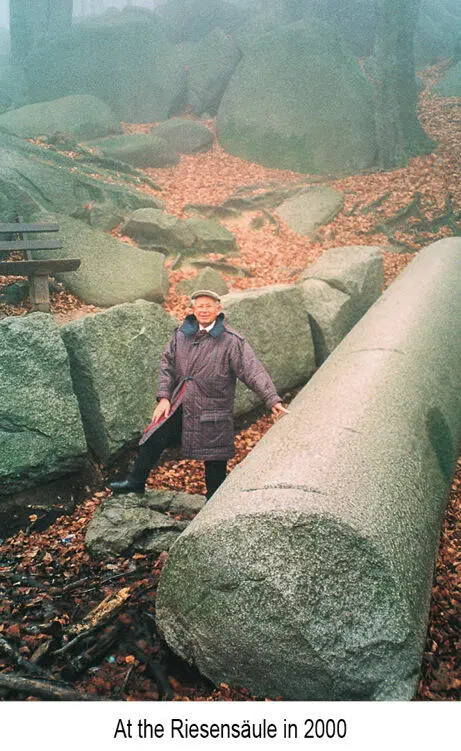
As children, we were far removed from the worries of the postwar generation. We heard adults speak often about the World War and the hated French occupation of the Ruhr, the land of iron mines. Or they talked of inflation, lamenting the ever-rising price of groceries and the diminishing value of the mark. What cost 40 marks to buy in 1920 when I was five, cost 77 marks a year later, and 493 marks a year after that. As bad as those increases were—prices doubling and tripling each year—in 1923 inflation went wild. In January of 1923, that same 40-mark item would have cost 17,972 marks; by July, 353,412 marks; by August, 4,620,455 marks; by September, nearly 99 million marks; by October, 25 billion marks; and by November, more than 4 trillion marks. People needed a wheelbarrow full of money—21 billion marks—to buy one loaf of bread! I only knew that Father gave me 10,000-mark notes to play with.
The grown-ups often discussed politics—Socialists, Communists, Worker Party, Zentrum Party—all words with no meaning to us young ones. One thing we did know: People were out of work, including some of our fathers and older brothers. Some, it was said, had to stand in long soup lines. There were rumors of unrest in the cities.
Things were no better in the Lauter Valley. The two small factories, a paper mill and a manufacturer of prussic acid, had only a handful of orders to fill. Even the main industry of the valley—stonecutting—had dropped off considerably. There was little demand for cut and polished red, gray, or blue granite for monuments, buildings, and gravestones. For the young children of the common people, the prospect of work was nonexistent.
My mother’s cousins Julius and Hugo proposed to my parents that when I finished school, I could stay with them and their elderly mother in Viernheim. They could use my help in the Oppenheimer Brothers store. They would also send me to a business school nearby to receive training as a salesman. This offer provided some peace of mind for my family.
❖❖❖
By now, Ida worked as a maid, and Hanna, my quiet and studious sister, was being trained as a secretary at the paper mill.
As for me, I was about to become a man—the time had arrived for my Bar Mitzvah. In preparation for the big event, I went to the town of Bensheim every Sunday. Our rabbi lived here, at the entrance of the Lauter Valley. On foot or by bicycle, I savored the seven-kilometer trip through lush meadows. I was the only candidate from the valley preparing for the Bar Mitzvah reading of the Torah. The rabbi, an open-minded and respected man of great patience, helped me with the pronunciation of the text. I struggled with the strange Hebrew characters, and it was even harder to remember what they stood for. Understanding is not the important thing, I was told, but rather the exact pronunciation of the Hebrew text in the sacred language of God. By the time I was 13, my reading was going smoothly. I eagerly awaited the day when my boyhood would end and I would be counted as a man. Then I could be included in a minyan, a group of ten adult male Jews, who had to be present to hold a public Jewish prayer service, such as Kaddish, a special prayer that the bereaved recite for the dead.
Читать дальшеИнтервал:
Закладка:
Похожие книги на «Crucible of Terror»
Представляем Вашему вниманию похожие книги на «Crucible of Terror» списком для выбора. Мы отобрали схожую по названию и смыслу литературу в надежде предоставить читателям больше вариантов отыскать новые, интересные, ещё непрочитанные произведения.
Обсуждение, отзывы о книге «Crucible of Terror» и просто собственные мнения читателей. Оставьте ваши комментарии, напишите, что Вы думаете о произведении, его смысле или главных героях. Укажите что конкретно понравилось, а что нет, и почему Вы так считаете.
